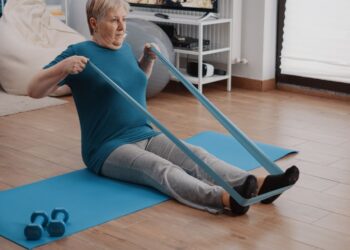In recent years, personal wellness has evolved from a luxury into a lifestyle necessity. People are no longer waiting for their annual physical or a visit to the spa to invest in their health. Instead, they are turning to technology—sophisticated, compact, and increasingly affordable—to bring professional-grade recovery tools directly into their homes.
From athletes to everyday professionals, individuals are realizing the importance of proactive recovery. What was once available only in clinics, sports centers, or rehabilitation facilities is now becoming a part of modern living. This transformation is fueled by technological innovation and the growing understanding that consistent recovery enhances not only performance but also longevity and quality of life.
The Shift Toward Home-Based Recovery
Health optimization used to mean going somewhere—visiting a chiropractor, booking a cryotherapy session, or scheduling physical therapy. Today, the trend is shifting toward home-based recovery ecosystems. These setups combine intelligent devices, mobile apps, and data-driven insights that make daily restoration more accessible and efficient.

Portable, user-friendly recovery tools are empowering people to take control of their own wellness journeys. This shift is not just about convenience—it’s about consistency. With tools readily available at home, individuals are more likely to follow through on routines that promote better circulation, muscle repair, stress reduction, and sleep quality.
The result is a new era of self-care: precise, measurable, and tailored to individual needs.
Technology as the Great Equalizer
Technology has become the bridge between elite recovery and everyday wellness. Advanced recovery devices once reserved for professional athletes are now reaching the mainstream market through innovation in materials, miniaturization, and smart design.
Wearable technology, for instance, allows users to track recovery metrics such as heart rate variability, sleep stages, and oxygen levels. These insights inform the best times for active recovery or rest. Infrared devices, percussion massagers, and compression therapy tools are now designed to fit seamlessly into the home environment—compact, quiet, and intuitive.
What’s most impressive is how these tools replicate the results of professional therapies at a fraction of the cost. They don’t replace experts but extend their reach—making maintenance and recovery a part of everyday life rather than an occasional event.
Hyperbaric Technology: Oxygen as a Healing Catalyst
Among the most intriguing advances in at-home recovery is the use of hyperbaric oxygen therapy (HBOT)—a technology once reserved for hospitals and sports rehabilitation clinics. Traditionally, hyperbaric chambers use increased atmospheric pressure to help the body absorb higher levels of oxygen. This process supports cellular regeneration, reduces inflammation, and accelerates healing from injuries or fatigue.
Today, compact versions of this technology have emerged, allowing people to experience these benefits safely at home. For example, someone searching for a portable hyperbaric chamber for sale will find modern options designed with medical-grade materials and easy-to-use controls. These portable units provide a practical way to access oxygen therapy without the logistical or financial barriers of a professional facility.
The benefits reported by users are compelling: improved mental clarity, faster post-workout recovery, enhanced energy, and even better sleep. Hyperbaric technology exemplifies how innovation has democratized access to therapies once considered highly specialized. It represents how far we’ve come in making clinical-grade recovery tools part of the household wellness landscape.
The Integration of Smart Recovery Systems
Smart recovery systems are combining multiple technologies into cohesive platforms. For example, some high-end home devices now integrate AI-based performance tracking with adaptive feedback. These systems adjust intensity levels or session lengths based on user data collected from wearables or mobile applications.
This creates a personalized recovery ecosystem, where your equipment “learns” your patterns and optimizes results over time. A post-workout recovery plan might automatically pair muscle percussion with cold therapy, followed by guided breathing or light therapy—all controlled from a smartphone app.
Such technology-driven systems blur the line between professional recovery centers and private homes. They bring science-backed techniques within reach of anyone serious about improving how their body feels, functions, and performs.
Beyond Recovery: The Preventive Health Connection
What makes these innovations even more impactful is their role in preventive health. Recovery is not only about repairing the body but also about preventing long-term damage and maintaining balance.
Technologies like red light therapy panels stimulate cellular repair before inflammation becomes an issue. Compression boots improve circulation before fatigue sets in. Infrared saunas detoxify and reduce stress hormones before they accumulate. By integrating such tools into daily routines, individuals can intercept problems early—supporting long-term health and performance rather than reacting after issues arise.
This proactive approach aligns with a growing understanding that prevention is the foundation of true wellness. The ability to manage recovery independently empowers people to stay healthier for longer, reducing the need for reactive interventions.
Accessibility and the Democratization of Wellness
Accessibility is one of the most powerful aspects of this technological movement. Once, specialized recovery tools required appointments, memberships, or travel. Now, they are available in compact forms suitable for home use, often at accessible price points.
The market continues to expand as consumer demand grows. Manufacturers are responding by designing devices that are intuitive, aesthetically appealing, and compatible with limited spaces. The focus is on user empowerment—enabling anyone, regardless of background or fitness level, to use professional-grade recovery methods safely and effectively.
Additionally, digital education and online wellness communities have made it easier to learn about and properly use these tools. Tutorials, remote consultations, and mobile applications provide users with guidance once reserved for in-person sessions. In this way, technology is not just delivering hardware—it’s delivering knowledge.
The Role of Data and Personalization
Modern recovery tools are not only mechanical but also analytical. With the integration of biometric tracking and data analytics, users can measure progress, detect trends, and tailor routines for optimal results.
For instance, recovery apps can analyze sleep quality, heart rate, and stress levels, then suggest adjustments to the user’s schedule or recovery protocol. This approach transforms recovery into an evidence-based, data-driven practice. It helps people see tangible improvements over time, reinforcing motivation and consistency.
As personalization continues to advance, future systems may even predict recovery needs before the user feels fatigued—creating a seamless balance between activity, rest, and regeneration.
Challenges and Responsible Use
While the convenience of home-based recovery tools is remarkable, responsible use remains essential. These technologies work best when integrated thoughtfully into a balanced lifestyle. Overuse or misuse can diminish results or even cause discomfort.
Users should follow manufacturer guidelines, consult professionals when necessary, and treat technology as a complement—not a replacement—for expert care. Maintaining a holistic approach that includes proper nutrition, hydration, sleep, and mental wellness ensures that recovery tools achieve their full potential.
As the industry grows, it’s also important that manufacturers uphold rigorous safety standards and transparency about efficacy. Consumers benefit most when technology innovation is matched by scientific integrity.
Conclusion: A New Era of Self-Care
Modern technology is transforming how people recover, rejuvenate, and maintain their health. The tools once limited to professional environments are now integrating seamlessly into daily life, allowing individuals to access therapies that accelerate healing, reduce stress, and improve performance—all from the comfort of home.
This movement signifies more than just convenience. It represents a cultural shift toward self-sufficiency and informed wellness. The boundary between clinical recovery and personal care continues to fade as innovation brings advanced solutions into everyday spaces.
In this new era, recovery is no longer a privilege—it’s a practice available to anyone willing to invest in their well-being. Technology has made that possible, turning our homes into sanctuaries of restoration, balance, and lasting vitality.














Discussion about this post